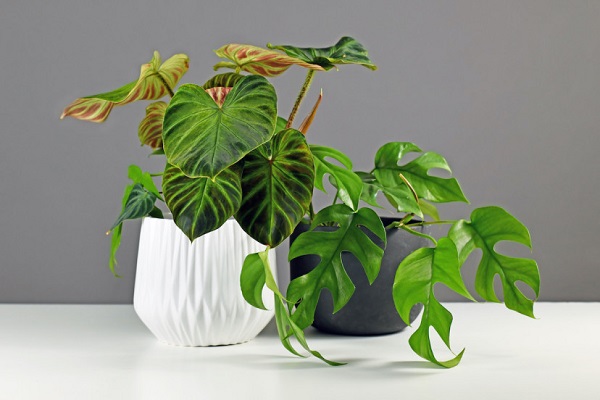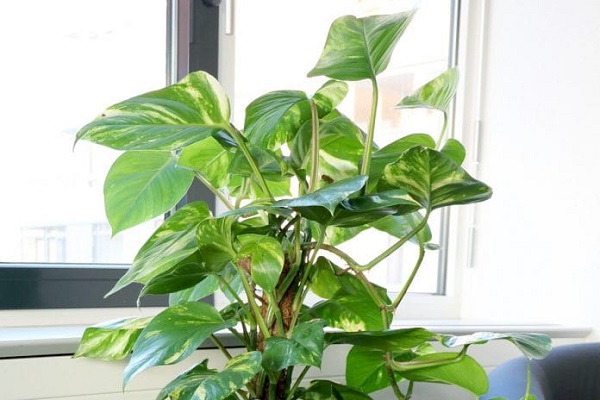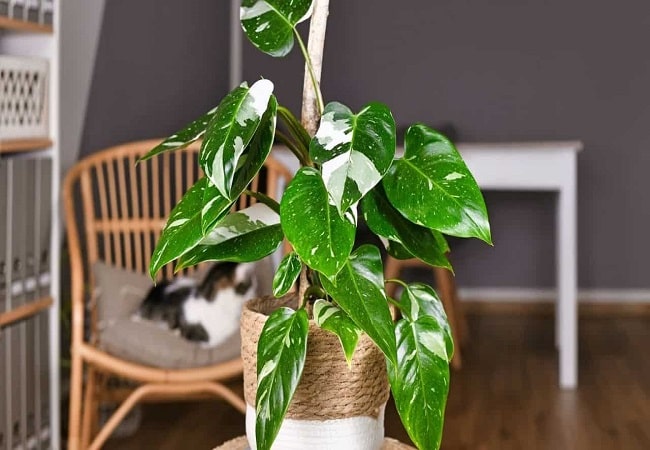Last Updated on May 1, 2023 by Md Deloar Hossain
Philodendron is a popular houseplant that is found in many homes. So You must know how to grow philodendron indoors. Philodendron is a genus of about 30 species of flowering plants in the family Araceae. The genus is native to the New World, but some species are now naturalized in other parts of the world.
They are mostly tropical or subtropical plants, but a few cold-hardy species exist. Most philodendrons grow as houseplants, but a few are grown as large outdoor plants.
The best way to grow philodendrons is to purchase a starter plant from a Garden Center or nursery and report it in a large container every couple of years. In this article, we will discuss the basics of growing philodendrons indoors.
Quick Navigation
The Best Way To Grow Philodendron Indoors

One of the easiest plants to grow indoors is the philodendron. These plants are easy to care for and grown in various settings. They require little water and will tolerate a wide range of temperatures. The philodendron is propagated by division but is also commonly grown from cuttings taken from healthy roots.
Here are a few tips for growing a philodendron indoors:
Container Selection
Philodendrons are usually grown in large containers, so choosing the right one for your plant is important. Make sure to find a container at least 12 inches deep and 24 inches wide. You can also use a tub or barrel if you have room for one. Water your philodendron regularly and fertilize it when needed, using a balanced fertilizer designed explicitly for house plants.
Supplies Needed For Planting Philodendrons Indoors
Philodendron is a popular houseplant that grows easily in most homes. The best way to grow philodendrons is by starting them with cuttings from healthy plants. You can also purchase new plants, but starting them from cuttings is easier and less expensive.
- Fill a large container with fresh potting soil and spread the roots of the philodendron cuttings out in the soil.
- Water the plants well and cover them with plastic wrap to keep them in the dark for four to six weeks until they begin to grow new growth.
- Once the new growth has appeared, slowly remove the plastic wrap and allow the plants to grow larger in their container. Philodendron plants need plenty of light to grow, giving them bright light.
- When the plants are big enough, you can transfer them into a larger container and stop watering them excessively; they should be able to survive on less water than before.
Species And Cultivars To Select
There are many species and cultivars of philodendrons, all with unique features. The elephant ear, heartleaf philodendron, and spider plant are more common species. Choosing a philodendron compatible with your growing conditions and has a healthy root system is important. Common cultivars include ‘Alba,’ ‘Baby Panda’, and ‘Golden Philo.’
Where To Place
A philodendron is an easy plant to grow and is placed in almost any room in the home. The key to success is to give your philodendron the right environment, including adequate light, humidity, and temperature.
Most philodendrons like bright, indirect light with a few hours of direct sunlight daily. They should also have moderate humidity, around 50% or more. The ideal temperature for most philodendrons is between 60-75 degrees Fahrenheit. If you live in a cold climate, you may want to bring your philodendron inside during winter.
Philodendron Soil Mix
One way to grow philodendron indoors is to use a soil mix. Some popular mixes include peat moss, perlite, vermiculite, and charcoal. The key is finding one with good drainage and high in organic matter. Philodendron prefers a neutral or slightly acidic pH soil mix.
If desired, add some compost or worm castings to the mix. Keep the potting soil moist but not wet, and fertilize with a balanced fertilizer every two weeks. If you live in a warm climate, you may need to water your philodendron more frequently. Place your philodendron in a sunny location and water as needed. In general, the pH level of your Philodendron soil should be between 6.0 and 6.5.
Philodendron Watering And Fertilization
Now it is time to water and fertilize your philodendron. Water your plant well, and then sprinkle a layer of fertilizer over the top of the root ball. Please give it a good watering again before leaving for work or school. Remember to check on your plant regularly, watering it and fertilizing it as needed.
In spring and summer, feed your philodendron once a month. The plant will grow fast. Feedings should happen every 6-8 weeks in the fall and winter. Look at the leaves to know when to feed more.
Climate Needs
The ideal temperature for a philodendron to grow is about 70 degrees Fahrenheit. They do best in well-drained soil with high organic content. If you live in a warm climate, your philodendron may be able to tolerate temperatures as high as 85 degrees Fahrenheit. Still, providing supplemental cooling such as shady areas or fans is best.
Air Layering
Air layering is the process of growing plants in an airtight container. The plant’s roots are placed in a mesh bag. Then the bag is placed in another mesh bag with holes in it. The bags are then sealed and left to grow. This method allows the plants to receive plenty of light and air, helping them to grow faster and healthier.
How To Water Philodendron After Planting?

When watering philodendrons, you will want to wait until the soil is completely dry before watering again. A good rule for most plants is to water them when the top inch of soil feels dry and then wait another hour before watering again. You can also use a moisture meter to ensure your plant’s soil is adequately hydrated.
Most of the time, you should water Philodendrons once a week. But how often your water can change based on the temperature, humidity, and soil quality. Before you water, it’s best to let the top of the soil dry out.
Philodendron Care Indoor

Philodendrons are easy to care for when you have the right equipment and techniques. Philodendrons are popular house plants because they form large, lush foliage and can quickly grow. However, they are not well-suited to cold climates, so you should grow them in a place with moderate temperatures and ample sunlight.
To grow philodendrons indoors:
- Preheat the potting soil in a warm environment before adding the plant.
- Plant the philodendron in the soil and water it well.
- 3. Protect the philodendron from drafts by covering it with a pot or another piece of plastic when not in use.
- Keep an eye on your philodendron’s leaves to ensure they don’t get too shaded or too hot, and adjust the plant’s watering schedule.
- Prune off old growth to keep the philodendron’s shape and appearance.
Frequently Asked Questions
Can You Grow Philodendron Inside?
Yes, philodendrons are grown indoors. Start by purchasing a healthy root ball from a nursery or garden center and planting it in a well-drained pot. Water the philodendron regularly and fertilize it once every few months with balanced plant fertilizer. Keep the plant in a warm room with indirect sunlight and avoid drafts.
Do Philodendrons Need Sunlight?
Philodendrons are tropical plants in brightly lit rooms with plenty of airflow and water. They don’t need direct sunlight, but they need some light to grow. Some recommend placing philodendrons near a window to get natural light, but others say that’s unnecessary. If you w
How Do You Stimulate The Growth Of Philodendron?
There are many ways to stimulate philodendron growth indoors. One way is to water the philodendron frequently, using a low flow or drip system. Another way is to fertilize the philodendron with a general-purpose fertilizer diluted according to the instructions on the package.
Can I Use Orchid Potting Mix For Philodendron?
Yes, you can use an orchid potting mix for philodendron. However, ensure that the potting mix has a high percentage of organic matter to help improve drainage and retention of moisture. Additionally, add some sand to the potting mix for better drainage.
How To Grow Philodendron Faster?
Philodendron (Kneeling Tiger) is a popular houseplant because of its striking foliage and large, showy flowers. It grew from cuttings taken from fresh plants or purchased plants. However, growing philodendrons indoors is challenging because the plant does not do well in low light and cannot tolerate drafts. Here are some tips for growing philodendron faster:
- Choose a bright spot in your home where you can grow philodendron in full sunlight. This will help the plant produce more flowers and foliage.
- Water philodendron regularly but avoid letting the soil become waterlogged. Allow the top 2 inches of soil to dry out between waterings.
- Fertilize philodendron every two to three weeks with a balanced fertilizer with nitrogen, phosphorus, and potassium.
In Closing
Learning how to grow philodendron indoors is an enriching and rewarding experience for any plant enthusiast. These beautiful and diverse plants not only add a touch of greenery and elegance to your indoor spaces but also improve air quality and create a calming atmosphere. By understanding the specific needs of philodendrons, such as lighting, watering, humidity, and fertilization, you can ensure their healthy growth and longevity.
As you become more skilled in cultivating these stunning plants, you may even discover new varieties to add to your collection or share your knowledge with fellow plant lovers. Embrace the joys of indoor gardening and let the vibrant world of philodendrons transform your home into a verdant sanctuary.

My name is Md Deloar Hossain and I’m the creator of Club Gardening, designed for all your gardening ideas, gardening product reviews, and a place to help you find the best gardening experience possible.


